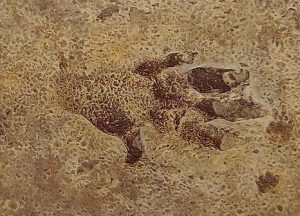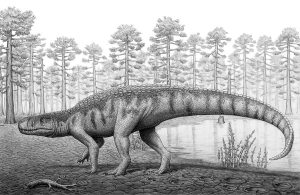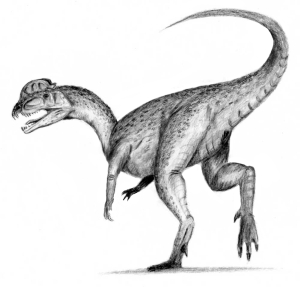|
The start of ichnology as an actual science really did not begin until the discovery and subsequent study in the 1830s of dinosaur tracks, which back then were widely believed to be the tracks of giant extinct birds. Below are the two tracks that probably had the greatest impact on the early history of the science.
 |

Chirotherium - Dinosaur tracks were among the earliest trace fossils to be studied, and the 1834 discovery of Chirotherium tracks (see left image) in the Triassic Bunter Sandstone (Buntsandstein) of Germany generated great excitement among geologists. However, most of them considered these tracks to have been made by ancient birds, not reptiles. Today, they are thought to have been made by a small dinosaur similar to the one shown on the right.
|
 |

Eubrontes - Professor Edward Hitchcock (1793-1864) of Amherst College in 1836 became aware of and began studying fossil tracks in the Connecticut River Valley. This particular track (see left image) was among the first that he described, and he originally referred to it as Ornithichnites, later changing the name to Eubrontes. He also attributed these tracks to giant, long-extinct, "thick-toed" birds, and it was only after many years of debate that the tracks were reinterpreted as the traces of ancient bird-like reptiles. Today, they are thought by some to have been made by a carnosaur (meat-eating dinosaur) known as Dilophosaurus, which is shown on the right. |
|




